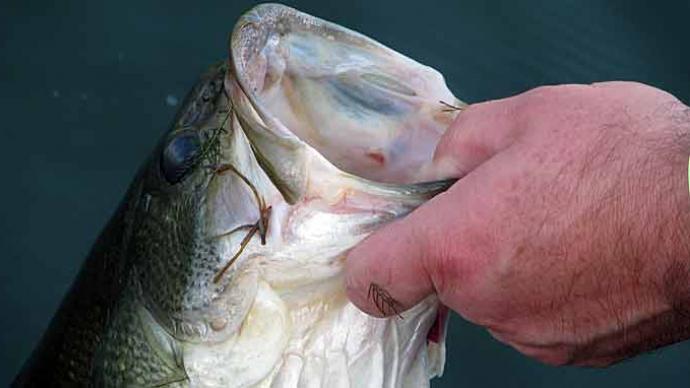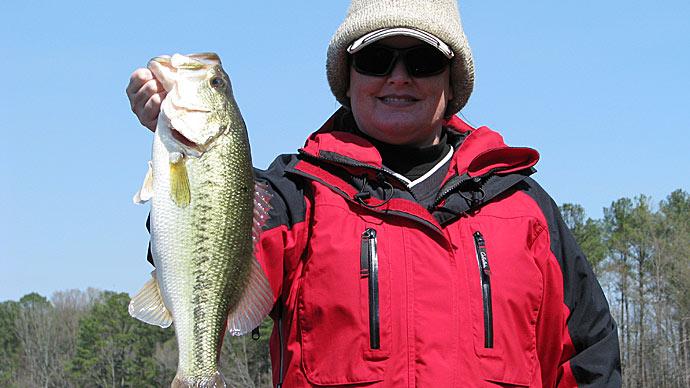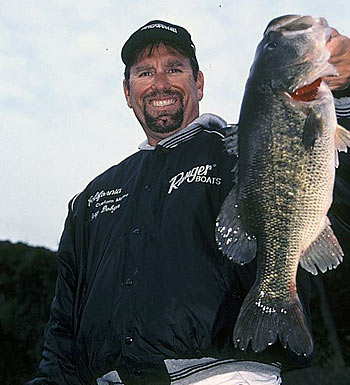
Winter can be a challenging time for bass fishermen…physically and mentally. Mentally, you may have already told yourself that fishing will be tough, which can be self-fulfilling. You should always go out expecting to be a bit on every bite. After all, why would you make that cast if you didn’t think it was possible to catch a fish there? Keep yourself as warm as you can and keep a positive attitude. That alone will go a long way toward ensuring a good day on the water.
Gary Dobyns, the owner of Dobyn’s Rods and a fantastic tournament angler, starts out shallow in every tournament, even in winter. Experience has led him to believe that there is always shallow bass no matter how cold it is or what the conditions are like. Finding and catching deep fish is very time-consuming, so he likes to target shallow fish because shallow fish are feeding fish which means they’re easier to catch. When he’s pre-fishing, he’ll fish shallow all day long, and even if this doesn’t produce reliable patterns, he’ll still go to the bank the first hour of any tournament.
Gary says you’d be surprised what kinds of places produce shallow bass in winter. He’s often found them in the back of creeks, especially with incoming water. Those creeks may be running warmer than the lake water. When it rains, and the fish put their heads in the current, they’re really easy to catch. He fishes a lot of spinnerbaits and jigs in current. He also loves mud banks, no matter what kind of slope they have. Mud banks put color in the water, making it easier to fool the fish. They’re also an excellent place for crawdads.
Long flat points that go out to deep water are the first places he fishes. If he doesn’t get a hit on the spinnerbait or jerkbait, he stays in the same places and switches to a Yamamoto Hula Grub on a football head jig. He fishes that jig down the bank faster than most guys fish a spinnerbait. At depths up to 30 feet, he selects a half-ounce jig; deeper than that, he’ll go to a ¾-ounce or even a one-tonner. He is targeting active fish, although active is a relative term. In winter, they don’t race around like in the summer and don’t have to eat as much either. So he moves the baits a little slower and fishes more thoroughly than in the summer.
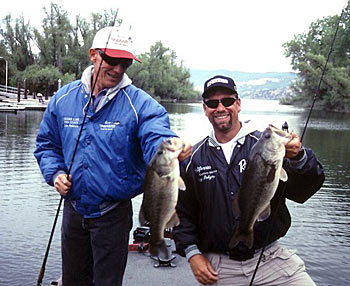
In addition to backs of creeks, mud banks, and long points, Dobyns favors various structures like docks and bridge pilings. He starts during pre-fish, fishing everything and watching where the fish come from. He’ll fish a variety of baits, and even if he’s fishing a worm or a jig, he fishes faster than most guys when he’s fishing shallow. He keeps the boat at a 45-degree angle to the bank and almost fishes worms and jigs like reaction bait. He’ll fish it in steep reservoirs to five or ten feet deep, then re-throw.
The first bait Dobyns usually picks up in winter is a spinnerbait. He downsizes the blades because a couple of #4 blades have less resistance than bigger blades so that the baits can run a tad deeper. These make great search baits, especially if there is shallow brush. Next up is a jerkbait, and if you know Gary, you know he’s known as a champion ripper. Gary will tell you that even though bass can be sluggish in winter, they can’t resist anything that looks like a crippled minnow. Even if a rip bait only goes six or seven feet deep, it will bring fish up from much deeper. They look up, see it acting crazy, and swim and eat it.
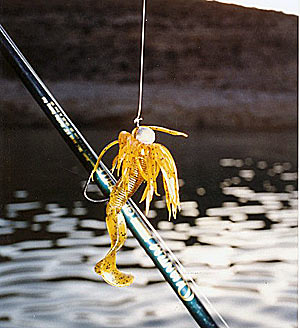
If he has to go deep, the following pattern he looks for is on the main lake. He’ll start checking the flats and nearby points and uses jigs and worms: Hula Grubs on jigs and Roboworms on smaller jig heads. He has found that one of the best ways to fish a jig deep is to drag it behind the boat, turning the trolling motor on and off to keep it dragging. He turns the motor down as low as it will go and keeps the line tight with the bait on the bottom. He doesn’t hop it. He drags it. On flats and points, he fishes jigs more than worms; in creeks and cuts, he uses more worms than jigs. Hooksets can be difficult in deeper water, but an excellent stiff jig rod and stout line with little stretch make a big difference.
Dealing With Weather
Gary says weather seems to be the biggest factor when fishing in winter. In a low-pressure situation, he’s almost always fishing shallow, but a high-pressure front will almost always force him to go deep. Wind, almost always, means a reaction bite, and he’ll pick up those spinnerbaits and jerkbaits on any windy morning. He faces into the wind because wind creates current, and the fish will face into the current and wait for it to bring food to them. He wants his bait to be that food. The exception is the dreaded high-pressure north wind on a bluebird day. That’s the only thing that will make him run away from the wind. He’ll try to find a place out of the wind, use more finesse, and fish a little deeper on those days.
One thing that should be “a given” in winter is wearing a life jacket. If you fall overboard in summer, you get wet. It may even be refreshing. But falling into icy water is entirely different. The shock can cause you to inhale involuntarily, getting water in your lungs. The sudden shock and cold can even cause a heart attack. If you survive the first few minutes, your muscles will start to shut down to preserve your heart and lungs. The longer you’re in, the less able you are to get yourself out. So, wear a life jacket and wear clothes that insulate you from cold and moisture and keep your feet off those icy gunwales! Dress in layers so that you can peel off a little at a time if the day starts to warm up.
Although it may seem counterintuitive, your best bet in winter may start shallow. Give it a shot. I bet you’ll be surprised.



